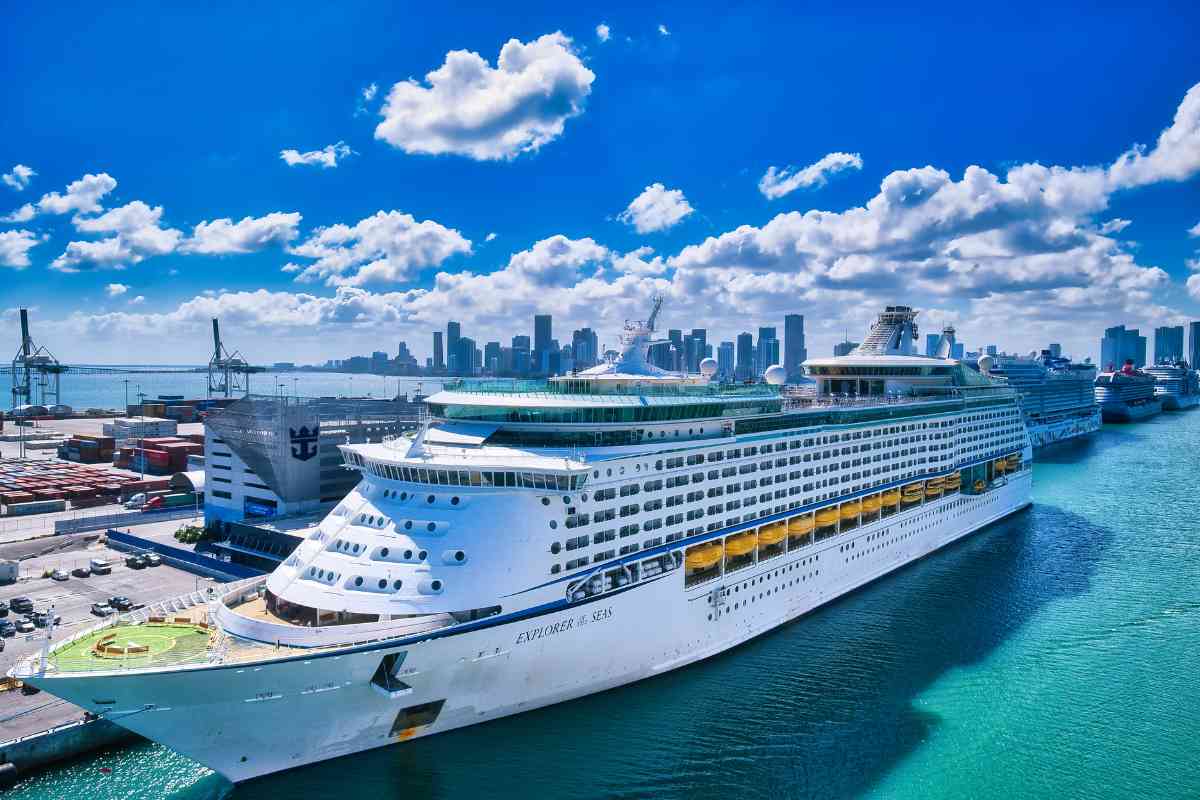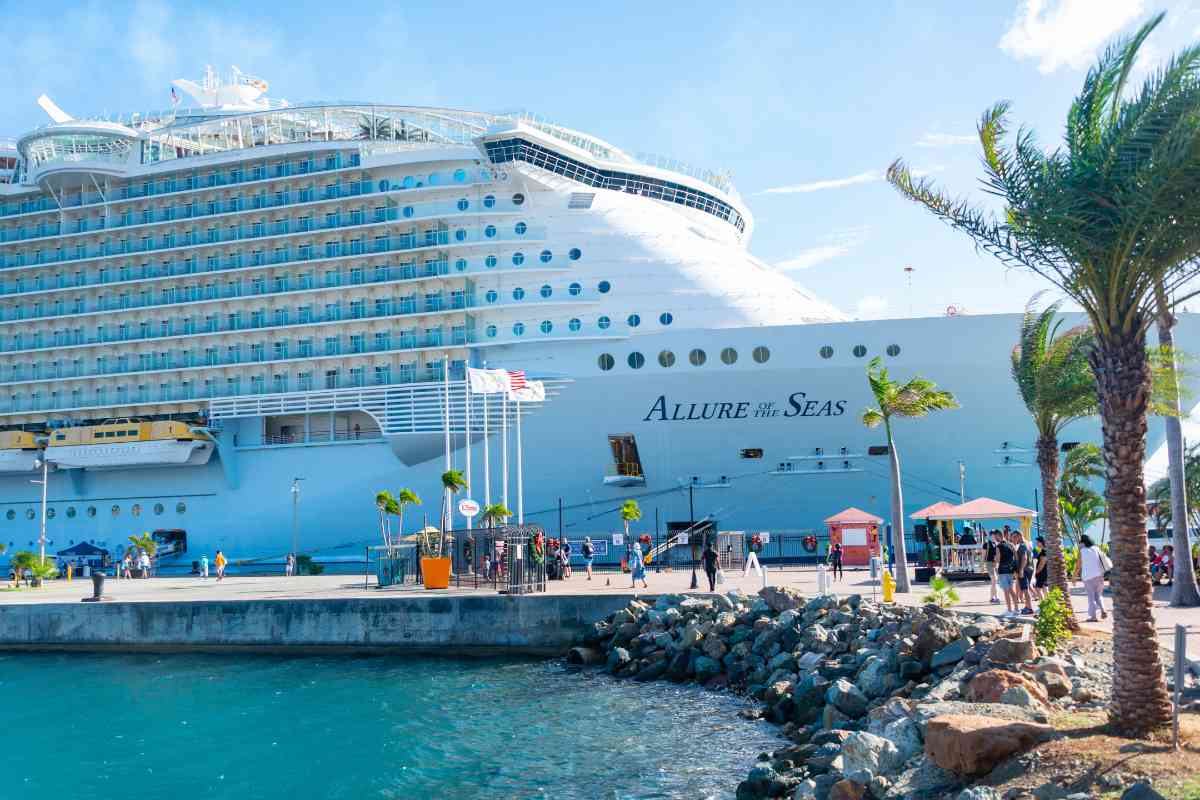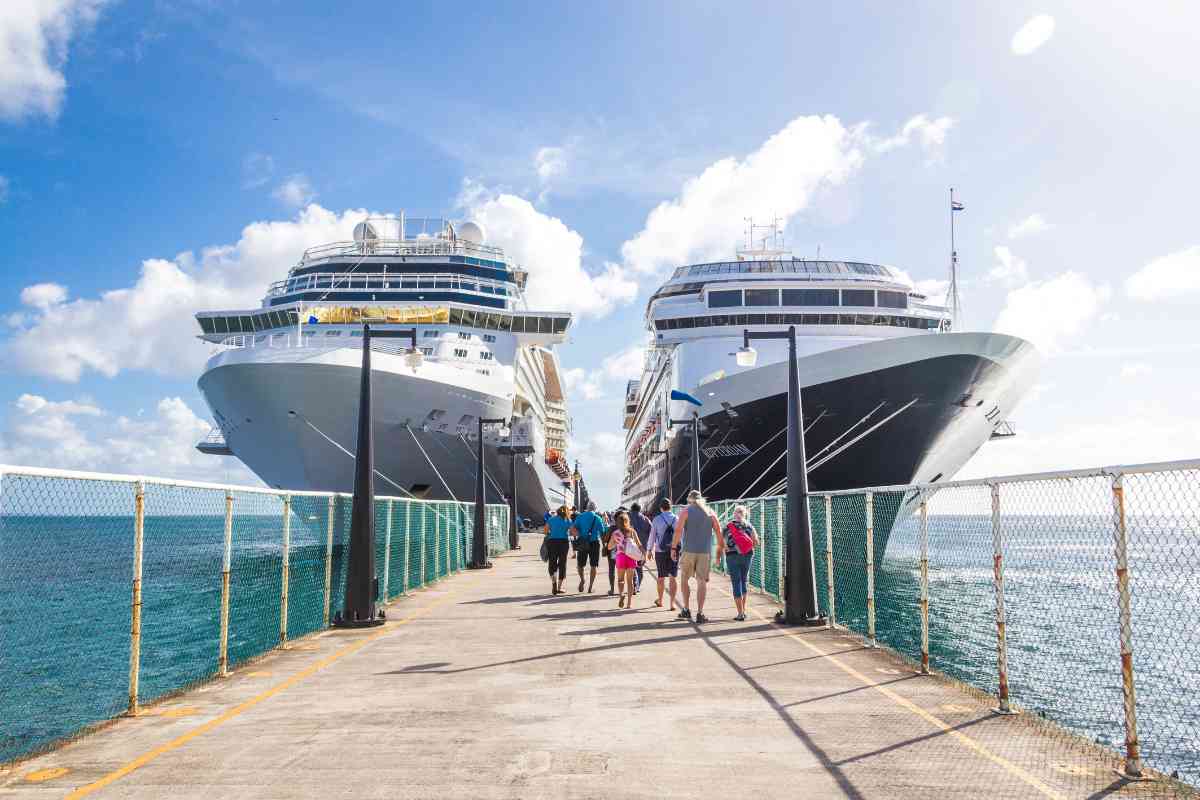Do Cruise Ships Dock on Port or Starboard Side? Explained

Embarking on a cruise soon and wondering about the nautical terms, docking procedures, and which side of the ship might offer you the best views? Our comprehensive guide offers a deep dive into the world of sea travel, unraveling the mysteries of port and starboard and offering insights into how docking procedures vary for different types of cruises.
We’ll also help you decide which side of the ship to choose for your cabin, considering factors like the itinerary, stateroom type, and your preferences. Whether you’re a seasoned sailor or a cruise newbie, this guide is packed with essential knowledge to enhance your cruise experience.
Do Cruise Ships Dock On The Port Or Starboard Side?
When it comes to docking, cruise ships don’t have a fixed side, they can dock on either the port or starboard side. Various factors influence this decision, such as the layout of the port, weather conditions, and the ship’s size.
Getting ready for a cruise? Check out our guide to sea legs after a cruise and the ultimate 7-day cruise packing list.
To better comprehend docking, some basic nautical terms are helpful:
- Port and Starboard: Instead of “left” and “right,” mariners use the terms “port” and “starboard.” The term “port” signifies the left side of the boat when facing forward, and “starboard” refers to the right side. These terms originate from Old English.
- Aft and Forward: These terms indicate the back and front of the boat, respectively. Aft signifies the back of the boat, while forward is the front. These terms are crucial when giving directions on a boat.
- Left and Right: Though “port” and “starboard” are commonly used, “left” and “right” are also used sometimes, with the direction determined based on the way you are facing.
Many nautical terms, including “port” and “starboard,” originate from Old English, reflecting England’s rich history of seafaring and naval exploration.
Read on to confidently navigate your next cruise and make the most of your journey. Enjoy seamless sailing by understanding the nuances of port vs starboard, unraveling the history of docking, and making the best cabin choice based on the docking procedures.
The History of Docking
Docking has been a fundamental part of sailing for centuries. This process involves bringing a ship alongside a dock or pier to load or unload cargo, passengers, or supplies.
Historically, ships would dock on the side of the pier closest to the wind to protect the ship from drifting away. This side was referred to as the “windward” side. The terms “port” and “starboard” later came to signify the left and right sides of the ship.
As ships grew in size, docking became more complex, necessitating clear and quick communication. The standard use of “port” and “starboard” helped avoid confusion.
Cruise ships can dock on either the port or starboard side, determined by the dock’s location and wind direction.
The docking process requires careful planning and coordination. The captain must account for the wind, tide, and current when approaching the dock, and the crew must secure the ship to the dock using ropes attached to the ship’s bow and stern.
The “stern-to” docking method has recently gained popularity, especially for larger ships. This method involves the ship backing into the dock, offering more docking efficiency when port space is limited.

Docking Procedure of Cruise Ships
Docking a cruise ship is a complex procedure requiring the captain and crew to consider several factors, including the ship’s size, weather conditions, and port location. The procedure can be outlined as follows:
- The captain maneuvers the ship towards the port. The loading side, usually equipped with gangways and other equipment to facilitate disembarking and loading supplies, faces the dock.
- The crew secures the ship to the dock using ropes and other tools to ensure it remains in place and doesn’t drift away.
- The ship may dock on either the port or starboard side, determined by the port’s layout and available docking space. This choice doesn’t impact the safety or efficiency of the docking procedure.
- Regardless of the cabin’s location on the ship, it doesn’t influence the docking procedure, meaning passengers needn’t worry about their cabin’s position.
The docking procedure is a complex process requiring precise planning and execution. The safety and efficiency of the process depend on multiple factors considered by the captain and crew.
Port vs Starboard: The Differences
The differences between the port and starboard sides become prominent when a cruise ship docks.
The port side is the left-hand side when facing the bow (front), while the starboard side is the right-hand side.
- View: Typically, the port side offers a view of the land, and the starboard side provides a view of the water. However, this can change depending on the dock’s orientation and the ship’s location.
- Orientation: When the ship docks on the port side, it generally faces towards the starboard side, and vice versa. This can affect the sunlight entering the cabin and the wind’s direction.
- Ambiguity: There can be some confusion when giving directions. To address this, sailors use “red” for port and “green” for starboard. A common mnemonic is “port wine is red,” which connects “port” (similar to “left”) with the left side of a traffic light, corresponding to the ship’s port side. Conversely, “green” represents the starboard side.
When docked, the main differences between a cruise ship’s port and starboard sides relate to the view, orientation, and potential ambiguity.
The mnemonic “port wine is red” can help avoid directional confusion.
Port Side vs. Starboard Side Summary
| Port Side | Starboard Side | |
| View | Land | Water |
| Faces | Starboard | Port |
| Potential Ambiguity | Yes | Yes |
Choosing the Best Side for a Cruise

Choosing between a cruise ship’s port and starboard sides depends on multiple factors, such as the itinerary, stateroom type, and personal preferences.
- Itinerary: If your itinerary includes scenic destinations, select a stateroom side offering the best views. For instance, a southbound Alaskan cruise might favor a starboard stateroom for coastline views, while Glacier Bay visitors might prefer port-side staterooms for glacier vistas.
- Stateroom Type: If you’ve opted for a balcony stateroom, consider which side will provide the best sunrise or sunset views. For instance, east-side staterooms are ideal for sunrise enthusiasts, while west-side ones favor sunset watchers.
- Personal Preferences: Ultimately, your preferences play a key role. Some passengers prefer the quietude of port-side staterooms, while others enjoy the activity on the starboard side. If prone to motion sickness, consider a lower-deck stateroom nearer the ship’s center.
Remember, there’s no universally “best” side.
Your itinerary, stateroom type, and preferences should influence your decision. When unsure, refer to the ship’s deck plan or consult your travel agent.
If you don’t like your room, it may be possible for you to change rooms on a cruise ship after it departs.
Types of Cruises and Docking Procedures
The docking procedure for cruise ships hinges on several factors, among them the cruise type. For instance, an Alaska cruise may have different procedures than a closed-loop or one-way cruise.
- Closed-Loop Cruises: Starting and ending at the same port, these cruises typically dock on the same ship side at each port of call.
- One-Way Cruises: Starting and ending at different ports, these cruises’ docking procedures can differ according to the itinerary.
Other factors impacting docking procedures include the ship’s size (larger ships require more docking space, while smaller ones can dock in tighter spaces) and cabin positioning (veranda or posh cabins may affect docking).
Generally, the captain and local harbor master collaborate to determine the best docking approach.
Although there’s no rule specifying which ship side docks, it’s often the port side, as most ships house engines and propellers on the starboard side, facilitating port-side maneuvering.
A cruise ship’s docking procedure is dictated by factors like the cruise type, ship size, and cabin positioning.
Rest assured, experienced captains and harbor masters ensure your ship is safely and efficiently docked at each port of call.

Cruise Type and Docking Procedures
| Cruise Type | Docking Procedure |
| Closed-Loop Cruise | Typically docks on the same side of the ship for each port of call |
| One-Way Cruise | Docking procedures can vary depending on the itinerary |
More Cruise Content
While researching cruise vacations, here are 5 popular cruise articles you may benefit from reviewing.
- Here’s what to pack for a 7-day cruise
- GTY Staterooms and When Royal Caribbean Assigns Them
- When does Princess assign guaranteed cabins
- Do Walkie-Talkies Work on Cruise Ships?
- How to change rooms on a Carnival Cruise
- Do Cruise Ships Dock on Port or Starboard Side?
- Caribbean Cruise in July: Must Know Secrets
Frequently Asked Questions
Which side of the ship do cruise ships usually dock on?
Cruise ships can dock on either the port or starboard side, depending on various factors. However, it is more common for ships to dock on the starboard side.
What determines which side of the ship cruise ships dock on?
The decision to dock on the port or starboard side depends on several factors, including the port’s layout, the size of the ship, and the direction of the wind and current. In some cases, the captain may need to dock on a specific side due to the port’s restrictions or regulations.
Is there a difference in view between the port and starboard side of a cruise ship?
Yes, there is a difference in the view between the port and starboard side of a cruise ship. The view on the port side faces the land, while the view on the starboard side faces the sea.
What are the advantages of being on the port side of a cruise ship?
The advantages of being on the port side of a cruise ship include a view of the land, which can be particularly appealing when the ship is entering or leaving a port. Additionally, the port side may be less affected by the sun, making it a cooler option during hot weather.
What are the advantages of being on the starboard side of a cruise ship?
The advantages of being on the starboard side of a cruise ship include a view of the sea, which can be particularly appealing during sea days. Additionally, the starboard side may be more affected by the sun, making it a warmer option during colder weather.
Is there a way to know in advance which side of the ship a cruise will dock on?
While it is not always possible to know in advance which side of the ship a cruise will dock on, some cruise lines may provide this information to passengers. Additionally, it is worth noting that the side of the ship that docks at a port may vary depending on the ship’s size and the port’s layout.
